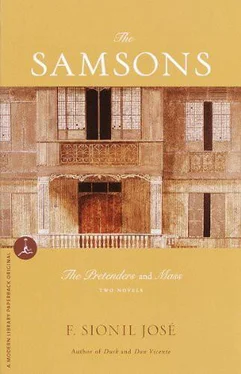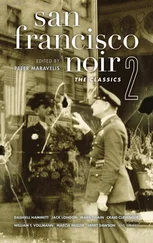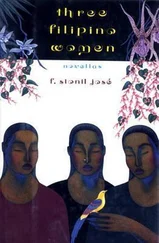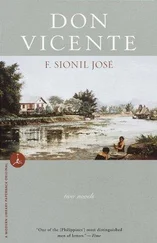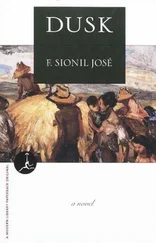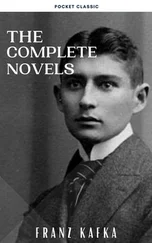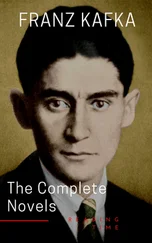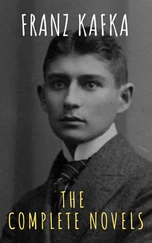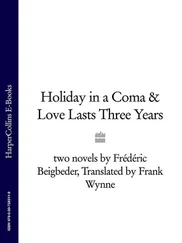“ Oye , just hope now,” she said above the steady thrum of the car, “that there’s a priest who knows what you are looking for. Records. They keep all sorts of papers there.”
He grunted in reply. The night covered the land completely and the yellow blobs of the headlights showed the white road, the edges of the fields, and some farmers trudging home with neat bundles of grain balanced with poles on their shoulders.
Cabugaw, like most Ilocano towns, was shabby, and it did not have the bold pretensions to progress, the profusion of soft-drink signs, and the brash architecture that the municipalities of Central Luzon had. The church was not difficult to locate. They had passed it earlier in the afternoon — a huge stone building with a tin roof, set on a green, weedy yard. In the darkness it loomed black and secret, with squares of yellow light framed in the windows of the adjoining convent.
She drove into the yard. Together they went to the door — an unwieldy mass of wood that towered above them, solid like the walls of the convent itself. He lifted the iron knocker and rapped twice.
“You’d better finish the interview as quickly as possible,” she said. “Remember, we still have a long drive to Vigan.”
He grunted more in displeasure than assent. Footsteps echoed within the convent and dispelled from his mind what he wanted to say. In a while the low second door opened and a beefy man in a white soutane stood before them, a candle in his hand.
“Good evening. We would like to see the parish priest,” Tony said.
The priest peered at the darkness behind them — to see the car perhaps. “Yes, yes,” he said. “I’m the parish priest. Come in and sit down.” He was past middle age. The candle flickered, but it was bright enough to show the priest’s features, his rimless glasses, the smudges on his soutane, and its frayed cuffs. He smelled faintly of tobacco.
“This is my wife, Padre,” Tony Samson said leading Carmen forward.
The priest raised the candle higher to get a better look at her. “Yes, yes,” he repeated. “Do come in and sit down.”
They entered what looked like a medieval cavern, a high-ceilinged room with a well-scuffed tile floor. The priest stood the candle on a circular table in the middle of the room and bade his guests sit on the wooden bench before it.
“I came here now,” Tony apologized, “because I may not find another convenient time.”
“Yes, yes?” the priest clasped his hands and nodded as if wanting to prod his visitors into talking more.
“The drive has been very difficult,” his wife said, contributing her bit. “And my car hasn’t been broken in really. The roads are not uniform — gravel here, asphalt there, and then cement …”
“Yes, yes,” the priest spoke mechanically.
“I was a teacher,” he said as if nettled into admitting it. “I taught history in the university and did some writing. But I’m now in business.”
“Where there’s definitely a lot more money,” Carmen added hastily.
“Ah yes, yes,” the priest agreed in his toneless manner. “But have you eaten supper?” He called out a name and a boy emerged from the shadows. “Prepare two more plates,” he shouted, and the boy disappeared beyond the door. “Now, what can I do for you?”
“It may seem foolish to you,” Tony said self-consciously. To his wife he turned for encouragement but she was not looking at him. She had turned away, her eyes on the walls and the narrow grilled windows.
“Why, why?” the priest asked, throwing his head back.
“I’m Ilocano,” he said, naturalness settling back in his voice. “And my grandfather came from here. I’ve come to see if I have relatives left.”
The priest rose. What he heard obviously impressed him. “I’ve never seen one like you, returning to where his ancestors were born — I mean, one going on a pilgrimage, sort of.” He spoke with enthusiasm. “Of course I know that Ilocanos—”
“They are all over the country,” Carmen joined him. “The country is crawling with Ilocanos.”
“Ah yes, yes,” the priest went on after a short, brittle laugh. He cracked his knuckles and peered at the woman. “Indeed you’ll find them saying that our root is in this or that town, but do they know what the Ilocos really looks like? I’ve been here all my life and I know that it hasn’t changed much. The houses are still small, the rice is still the same hard variety. They are planting Virginia tobacco now, too much of it — and that’s the only difference. And, of course, a few new houses with galvanized iron roofs …”
The boy who had set the table returned and told them supper was ready. They padded through a dimly lit corridor and up a wide stairway into another wide room as shabby as the first.
The boy hovered, a paper wand in his hand. As Tony had expected, the convent larder was well-stocked. They had fried rice, broiled pork, chicken broth, and an omelet.
The priest made the sign of the cross. “Eat, eat,” he said amiably.
Tony did not want to waste time. They had barely started with the soup when he spoke again: “You may have heard of my ancestor. You see, about a hundred years ago he used to be in this very church, serving as an acolyte.”
The priest dropped his spoon. “No, no,” he said. “I cannot really say. A hundred years ago? But I wasn’t even born then. And Samson? I have met none of your relatives. There’s not one Samson in the whole town — that’s what I know.”
“Surely, Padre,” Tony didn’t want to give up, “there must be something here that will be conclusive.” His appetite had dwindled. “Church records, baptismal notices. They could hold his name. You see, he migrated to Pangasinan with his whole clan. But this may not be true. And he was a scholar — that’s what my father always said. He wrote in Latin …” He felt proud.
When they finished the dessert of preserved nangca , ‡the priest took them down again, explaining that they might find something among the records. They walked silently through corridors. The taper threw their shadows against the crumbling masonry and etched the thick, rotting posts and the red brick. They stopped before an appallingly large wooden cabinet, which seemed to sag into the very floor — an elaborately carved relic with iron handles rusty and immovable on their hinges.
“We might be able to see something here,” the priest said. “Most of the old records are here — from 1800 up.”
He gripped the rusty bar and, with a violent tug, opened it. “You’ll have to forgive the sorry state of the papers,” the priest said gravely. “I have no time to look after them.”
The layer of age that covered the rooms assailed them, and Carmen instinctively held her palm to her nose. The priest picked one of the ledgers at random. Its cover was clearly marked Registro de Defunciones, 1840. He leafed perfunctorily through the pages of the death registry. The line marks, which may have been straight and black once, were all smudged, and the pages themselves threatened to break apart like flakes if they were flipped. In the sallow light, however, Tony Samson could trace the fine scrawl, the elaborate crosses of the t ’s and the flourishes at the beginning of all the capital letters. The priest read aloud some of the names and, after two pages, stopped.
The boy who had served upstairs at the table joined them with a Coleman lamp, and the shimmering light identified everything in the giant room — the old tile floor and the battered chairs. “Now we can see better,” the priest said. He reached for the top shelf and, at random again, got two ledgers and handed them to Tony.
Tony read the inscriptions on the covers of the registries of marriages and births. One was marked Registro de Casamientos, 1860–1865. The other bore the equally elaborately written title Registro de Nacimientos, 1865–1867.
Читать дальше
